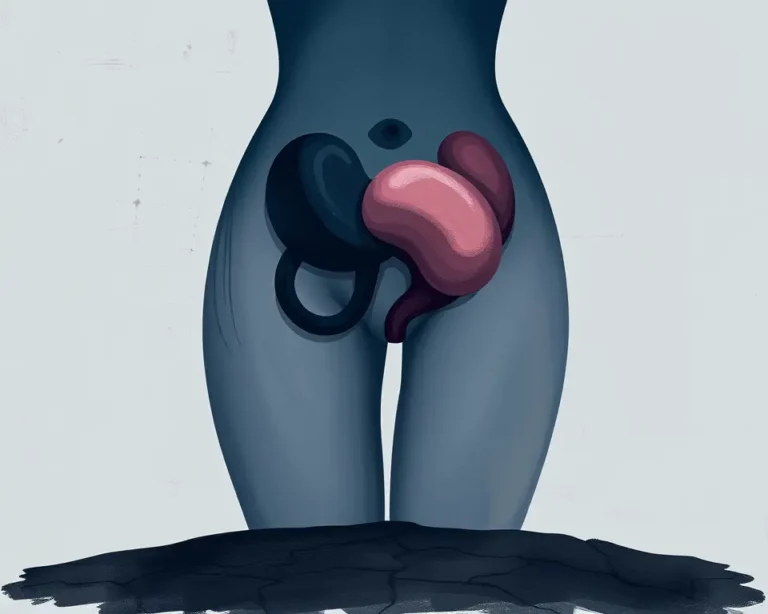Pelvic organ prolapse (POP) is a common condition that affects many women, particularly after childbirth or menopause. It occurs when the muscles and tissues supporting the pelvic organs weaken, causing one or more of these organs (bladder, uterus, rectum) to drop from their normal position and bulge into the vagina. While it’s not life-threatening, POP can significantly impact a woman’s quality of life, affecting everything from physical activity and intimacy to mental well-being.
If you’re experiencing prolapse, know that you’re not alone. It’s more common than you might think. Here’s what I wish I had known earlier about navigating life with prolapse.
1. Understanding the Different Types of Prolapse
Prolapse isn’t a one-size-fits-all condition. It can affect different pelvic organs, leading to various types of prolapse:
- Cystocele (Anterior Prolapse): The bladder bulges into the front wall of the vagina.
- Rectocele (Posterior Prolapse): The rectum bulges into the back wall of the vagina.
- Uterine Prolapse: The uterus descends into the vagina.
- Vaginal Vault Prolapse: The top of the vagina sags down, often after a hysterectomy.
- Enterocele: The small intestine bulges into the vagina.
Symptoms can vary depending on the type and severity of the prolapse. Some women may not experience any symptoms, while others may have:
- A feeling of heaviness or pressure in the vagina or pelvis
- A bulge in the vagina that you can see or feel
- Difficulty emptying your bladder or bowel
- Urinary leakage (incontinence)
- Painful intercourse
- Lower back pain
2. Sex and Prolapse: It’s Still Possible
One of the biggest concerns for women with prolapse is how it will affect their sex life. It’s understandable to feel anxious or self-conscious about intimacy. Some women may experience:
- Discomfort or pain during sex
- Decreased sensation
- Feelings of self-consciousness or embarrassment
However, prolapse doesn’t have to mean the end of your sex life. Here are some tips to help you maintain intimacy and pleasure:
- Communication is Key: Talk to your partner about your concerns and what feels comfortable.
- Experiment with Positions: Certain positions may put less pressure on the pelvic organs. Try lying on your side or having your partner on top.
- Use Lubrication: This can reduce friction and discomfort.
- Pelvic Floor Exercises: Strengthening your pelvic floor muscles can improve support and sensation.
- Consider a Pessary: A vaginal pessary can provide support and reduce symptoms during sex.
- Relaxation and Mindfulness: Choose a time and setting that helps you and your partner feel relaxed.
It’s also important to remember that intimacy isn’t just about sex. Explore other ways to connect with your partner emotionally and physically, such as cuddling, massage, or simply spending quality time together.
3. Exercise: Finding the Right Balance
Staying active is important for overall health and well-being, but it can be tricky when you have prolapse. Some exercises can worsen symptoms, while others can be beneficial.
Exercises to Avoid or Modify:
- High-impact exercises: Running, jumping, and intense aerobics can put excessive pressure on the pelvic floor.
- Heavy lifting: Avoid lifting heavy weights or straining during exercise.
- Exercises that increase intra-abdominal pressure: Crunches, sit-ups, and some yoga poses can worsen prolapse symptoms.
Pelvic Floor Safe Exercises:
- Walking: A great low-impact option for cardiovascular health.
- Swimming: Gentle on the joints and pelvic floor.
- Seated Cycling: Provides a good workout without excessive pressure.
- Low-Intensity Water Aerobics: Buoyancy reduces stress on the pelvic floor.
- Seated Light Weights: Strengthen upper body without straining the pelvis.
- Narrow Squats and Lunges: Modify to ensure proper form and avoid straining.
- Pilates: Can be safe if modified to avoid high-pressure movements. A recent study found that Pilates generates less pressure on the pelvic floor than everyday activities like standing up and laughing!
Pelvic Floor Muscle Training (Kegel Exercises):
Kegel exercises are essential for strengthening the pelvic floor muscles and supporting the pelvic organs. Here’s how to do them correctly:
- Identify the Muscles: Imagine you are trying to stop the flow of urine or prevent passing gas. These are the pelvic floor muscles.
- Contract: Squeeze the muscles tightly and hold for 5-10 seconds.
- Relax: Release the muscles slowly and completely.
- Repeat: Aim for 3 sets of 10-15 repetitions daily.
It’s important to maintain correct form:
- Don’t hold your breath.
- Don’t tighten your abdominal, buttock, or thigh muscles.
- Focus on isolating the pelvic floor muscles.
If you’re unsure whether you’re doing Kegel exercises correctly, consult a pelvic floor physiotherapist.
4. The Mental Health Impact of Prolapse
Prolapse can take a toll on your mental health. Many women experience:
- Anxiety
- Depression
- Low self-esteem
- Body image issues
- Feelings of shame or embarrassment
- Social isolation
It’s important to acknowledge these feelings and seek support. Here are some ways to cope with the emotional challenges of prolapse:
- Talk to a Therapist: A therapist can help you process your emotions and develop coping strategies.
- Join a Support Group: Connecting with other women who have prolapse can provide a sense of community and understanding.
- Practice Self-Care: Engage in activities that make you feel good, such as reading, spending time in nature, or pursuing hobbies.
- Communicate with Your Partner: Share your feelings with your partner and work together to find ways to maintain intimacy and connection.
- Focus on Your Strengths: Remind yourself of your positive qualities and accomplishments.
- Challenge Negative Thoughts: Replace negative thoughts with more positive and realistic ones.
Remember, taking care of your mental health is just as important as taking care of your physical health.
5. Treatment Options: Exploring Your Choices
There are several treatment options available for prolapse, ranging from conservative measures to surgery. The best option for you will depend on the type and severity of your prolapse, your symptoms, and your personal preferences.
Non-Surgical Options:
- Pelvic Floor Exercises: As mentioned earlier, Kegel exercises can help strengthen the pelvic floor muscles.
- Lifestyle Changes: Losing weight, avoiding heavy lifting, and managing constipation can reduce pressure on the pelvic organs.
- Vaginal Pessary: A pessary is a silicone device inserted into the vagina to support the pelvic organs. It can be a good option if you want to delay or avoid surgery.
- Hormone Therapy: If you’re postmenopausal, your doctor may recommend estrogen therapy to help strengthen the vaginal tissues.
Surgical Options:
If non-surgical options don’t provide enough relief, surgery may be an option. There are several different surgical procedures for prolapse repair, including:
- Anterior Repair (Cystocele Repair): Tightens the tissues supporting the bladder.
- Posterior Repair (Rectocele Repair): Tightens the tissues supporting the rectum.
- Uterine Suspension: Lifts and supports the uterus.
- Vaginal Vault Suspension: Lifts and supports the top of the vagina after a hysterectomy.
- Hysterectomy: Removal of the uterus (may be recommended in some cases of uterine prolapse).
It’s important to discuss the risks and benefits of each treatment option with your doctor to make an informed decision.
6. Seeking Support and Information
Living with prolapse can be challenging, but it’s important to remember that you’re not alone. There are many resources available to help you cope and find the best treatment options.
- Your Doctor: Your primary care physician or gynecologist can diagnose prolapse and recommend treatment options.
- Pelvic Floor Physiotherapist: A physiotherapist can teach you how to do Kegel exercises correctly and provide guidance on safe exercise.
- Support Groups: Connecting with other women who have prolapse can provide emotional support and practical advice.
- Online Resources: Websites like the National Association for Continence and the International Urogynecological Association offer valuable information about prolapse.
Don’t hesitate to reach out for help and support. With the right information and treatment, you can manage your prolapse symptoms and live a full and active life.







